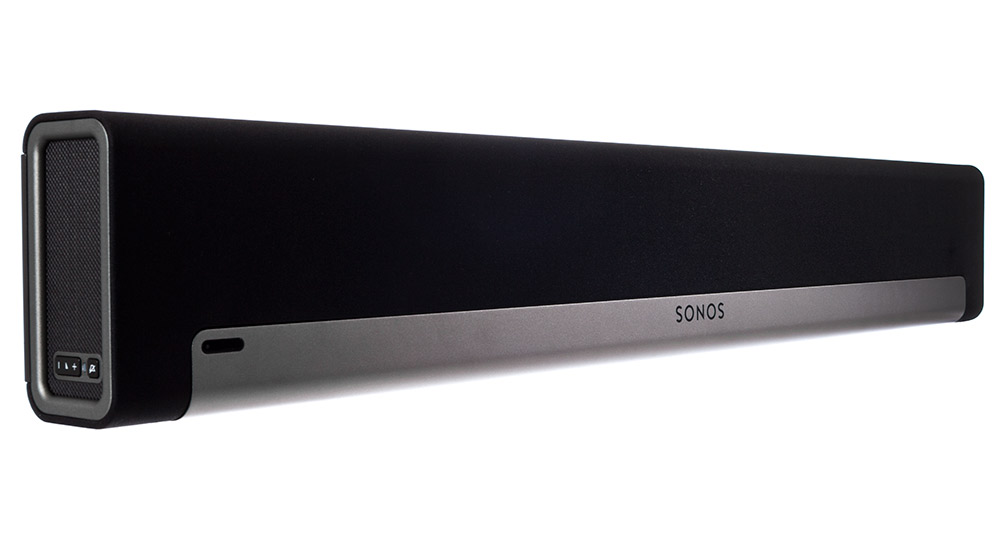The Sonos Playbar is an older 3.0 soundbar alright for mixed use. Although its sound profile is slightly bright, it still sounds fairly neutral and is good for vocal-centric content like podcasts and TV shows. It also lacks sub-bass but you can easily upgrade this setup with a separate subwoofer or satellites if you’re looking for a better listening experience. On the downside, this soundbar doesn’t support Bluetooth and doesn’t have an HDMI port. Instead, you can use your Wi-Fi connection to stream your favorite jams. Keep reading on for the Sonos Playbar speaker review here.
Sonos Playbar Speaker Review
Set-up
Of course, you can buy a simple Sonos One or Sonos Move if all you want is lots of music. The difference is that the Playbar also connects to your TV. Disappointingly, there’s just one way to do this, and that’s via digital optical cable.
This has advantages in terms of simplicity – all of your devices stay connected to your TV as normal and you have just one cable connecting the TV and Playbar – but it’s not as neat as those systems with multiple HDMI inputs and a single HDMI output for video.
And while optical outputs on TVs are pretty common these days, they haven’t been for that long. You definitely want to check if your TV’s got one before forking out on a Sonos Playbar. The Sonos Beam has since launched with HDMI, should you prefer a Sonos TV speaker with this connection.
If you do take the plunge you’ll start to consider it money well spent as soon as you take the unit from the box. This is a really nicely made and minimally styled unit that blends in neatly. It can be wall-mounted using an optional mount or laid flat in front of your TV, with the built-in accelerometers automatically sensing the orientation and adjusting the sound accordingly.
Audio quality
You might not notice all that much difference if you just hook it up to your TV and tune into the news. Oh, yeah; that does sound a bit richer, I suppose, you say to yourself. But you didn’t spend six hundred quid just so you could make Bill Turnbull sound better (unless, perhaps, you are Bill Turnbull; hi, Bill!).
So you stick some music on. And an hour later, once you look up again having sat mesmerised as you discover depth and delight in tracks you thought you knew well, you’ll know that that $699 / £699 / AU$999 was well spent.
Sure, you might crave a bit more punch at the bottom end, something you could add with a Sonos Sub that would – eek! – double the cost of the Playbar. Yes, the stereo separation, while remarkably good for a single unit thanks to side-firing speakers, could be better.
Design
- Measures 85mm x 900mm x 140mm, black only
- Can be wall-mounted or placed on top of furniture
- IR receiver, 2x Ethernet ports, no HDMI, no RCA inputs

The Sonos Playbar is long, black and moody. That’s the immediate takeaway when you get the Sonos Playbar out of its box to set it up. It’s almost as wide as a 47-inch TV and it can be wall-mounted, or just placed on top of furniture in front of your television.
The bar itself, like other Sonos speakers, is very simple in its design, though it looks much older than the more recent additions we mentioned above. Newer Sonos speakers have a cleaner, more streamlined appearance with plastic playing a key role, while the Playbar has black material and grey metal trimmings alongside plastic, resulting in a fussier and older appearance when compared to the likes of the Playbase, Beam, Play:5, Sonos One, Sonos One SL and Sonos Move.
Some might prefer the Playbar’s design, while others will enjoy the smooth, clean lines of the newer speakers in the Sonos line-up.
There is an IR receiver panel on the front and top of the Playbar, so it doesn’t matter how you mount the speaker, while volume control buttons and a mute button are present on the right-hand side of the Playbar. This means you can manually control the volume if you don’t have your phone, tablet, or TV remote to hand, but the buttons are also used for setting up the Playbar (more on that later).






Leave a Reply